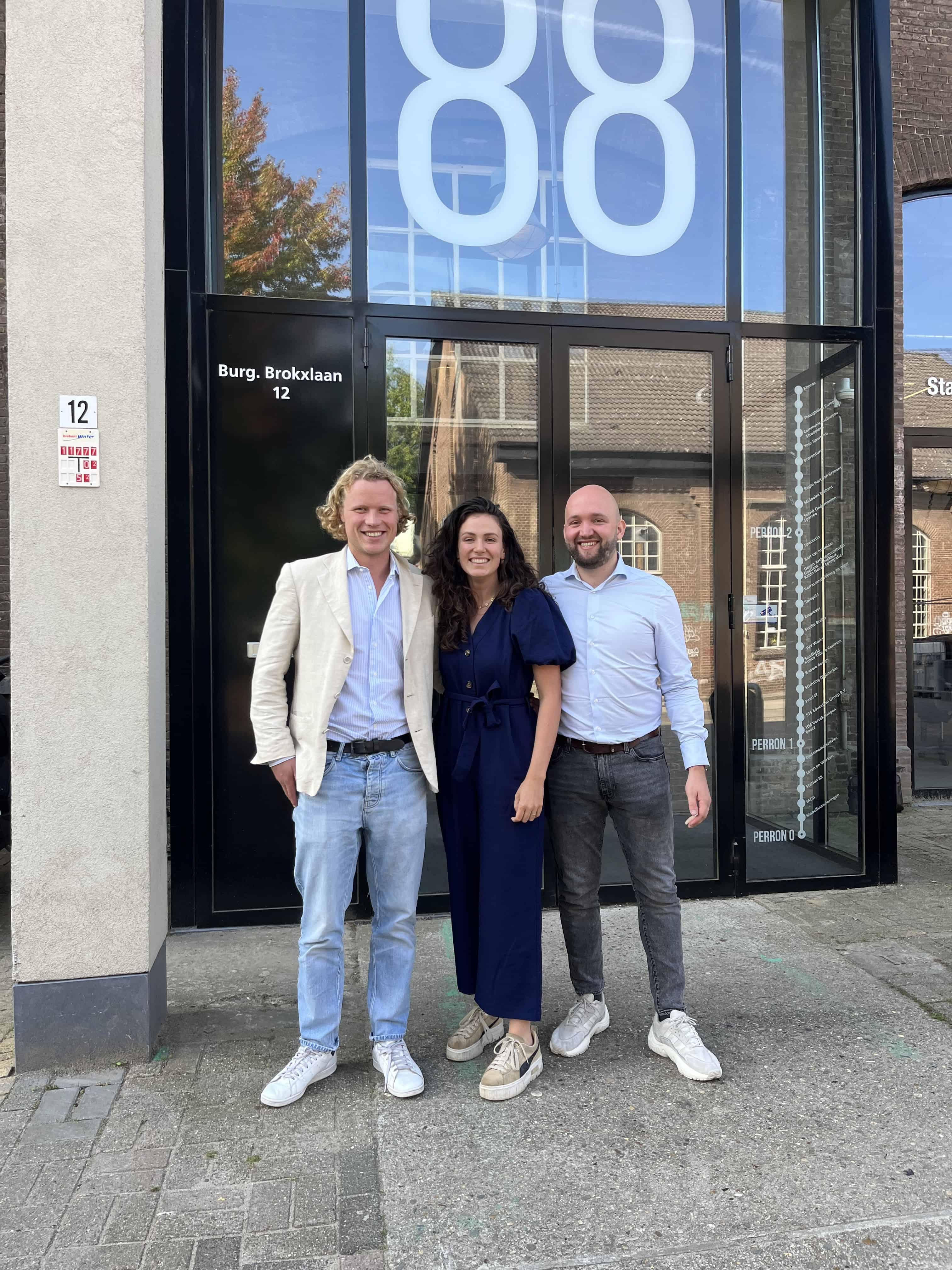
Within organizations, people – from employees to customers and visitors – perform all kinds of different tasks all day long. This always happens according to a certain process. Take a hospital, for example. A patient comes in, registers at the front desk, gets a consult, and then possibly moves on to a specialist or the pharmacy to pick up some medicine. Doctors, meanwhile, have a calendar filled with appointments, various administrative tasks, and emergency call-outs. Analyzing data from hospital computer systems exposes inefficiencies in the process. Adjustments can reduce the workload for doctors and improve the patient experience. In addition, it often yields cost savings.
Process mining is a relatively new technology and method invented at Eindhoven University of Technology (TU/e). This technology fascinated Lotte Vugs and Maarten van Asseldonk, students at TU/e at the time. “Since not many people were using this technology yet, we started working as process mining consultants six years ago, helping companies audit their processes using data. That was very rewarding work because it immediately became more tangible about how companies could improve,” Vugs says.
- Process mining, a relatively new technology, identifies inefficiencies in business processes through data.
- Preparing the data for proper analysis is a difficult and time-consuming task. Konekti is developing a tool to make this easier.
- Konekti aims to be the market leader in data preparation for process mining in five years.
From data to overview
While working as process mining consultants, they came up with the idea for Konekti. “With process mining, we can identify a lot of inefficiencies at companies, but the technology itself also has a lot of inefficiencies. That is data preparation,” she continues. The consultants discovered that other people in their field were encountering the same problems. That’s how Konekti was born: a data preparation tool for process mining.
The solved Rubik’s Cube
Vugs explains Konekti using a comparison: “You can compare process data in companies’ systems to an unsolved Rubik’s Cube. Each cube is a piece of data. These are scattered across different tables and systems. With traditional data preparation tools, you can solve one side of the cube with a lot of struggle. This takes an incredibly long time. With Konekti, we give users a manual to solve the entire puzzle. The manual speeds up this process, the structure makes it easier, and on top of that, users don’t need coding skills because it’s a low-code tool.” The result – the solved Rubik’s Cube – can then be easily viewed from different angles.
Van Asseldonk adds: “It’s important to look at the same process from different perspectives. Because if you only focus on one part, it can actually be detrimental to others. Mentioning the hospital example again, if you reduce the patient’s waiting time by ten minutes, the experience improves. But if that means the doctor wastes half an hour of his time because he has to walk up and down the hospital a few times, it may not be such a good fit after all.”

Usability
As a Konekti user, you organize the data points you want to analyze. This helps you keep an overview and continuously monitor whether you’re on the right track. “We put a big focus on user-friendliness from the beginning. This makes data preparation up to ten times faster. In addition, we enable more people to do this kind of work,” says Van Asseldonk. Nowadays, data setup is often done by data engineers, and analysts perform analysis. Using Konekti, analysts could collect more data themselves, giving data engineers – highly sought-after professionals nowadays – more space. Currently, Konekti is working with several companies on the first pilot implementations. “It’s great to see that people who never did data preparation themselves before can do it on their own with our tool,” Vugs says with pride.
The founders are now wrapping up the pre-seed investment round. “Given the traction in the market, we are also immediately preparing the seed round for the end of 2024,” she states. Van Asseldonk and Vugs have a clear goal in mind. Konekti is the first commercial tool in data preparation for process mining, and in five years, they want it to be the standard in the market. “Just like PowerPoint is the standard for creating presentations,” Vugs states.
Growing market
They are in a growing market. In fact, a growing number of companies are engaging in process mining. “More and more people see the possibilities of this technology. Still, collecting the data is often the only difficult matter. As a result, people actually see the importance of Konekti. This is how the market for our technology is created,” Van Asseldonk continues.

Investors
To establish new contacts, Konekti is going to Helsinki’s start-up festival, Slush. The company is one of twelve start-ups going along with the trade mission from the 4TU.Federation, a joint partnership between the four technical universities in the Netherlands. Each university selected four start-ups for the mission. The delegation also includes people from the Rijksdienst voor Ondernemend Nederland (RVO) – the Dutch Enterprise Agency – and regional development agencies.
Slush is a multi-day event with 13,000 visitors, 5,000 start-ups, 3,000 investors and 300 journalists. The idea is to bring investors and start-ups together. “The great thing about the Dutch delegation is that it really feels like a group. Everyone has his or her own interest, but there is also a common interest: to put entrepreneurship in the Netherlands on the map,” says Sebastiaan Huntjens. He is a business developer at The Gate, the Eindhoven start-up help desk of Brainport Development, TU Eindhoven, Fontys Hogeschool, Summa College, the municipality of Eindhoven, and the Brabantse Ontwikkelingsmaatschappij (BOM), and guides start-ups around their activities in Helsinki.
“We mainly want to get to know investors and get an idea of their expectations for the second round of investment,” Van Asseldonk says about Konekti’s goal at Slush. Vugs: “By getting acquainted with potential investors now, we can already include them in the growth we are experiencing even before they actually step in. We then have a longer date period before entering the investor marriage.”

